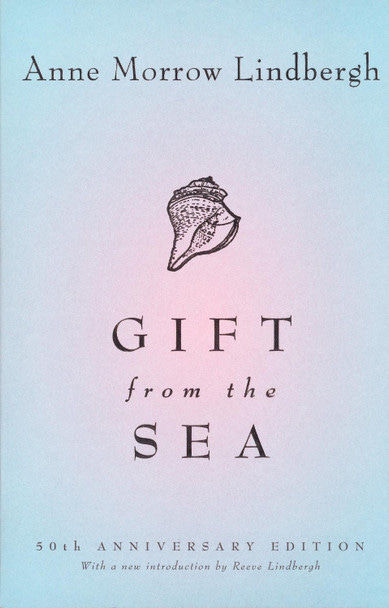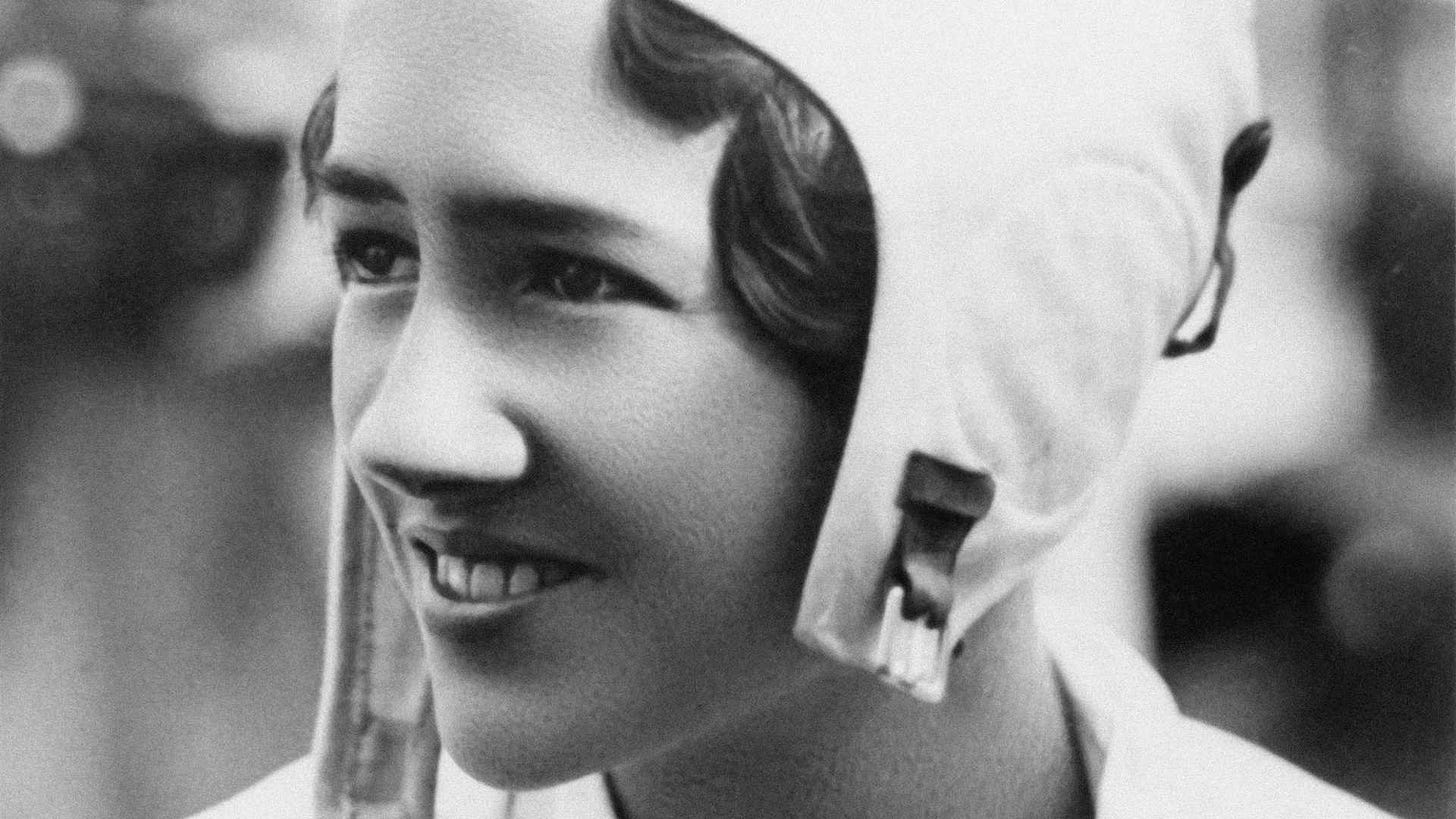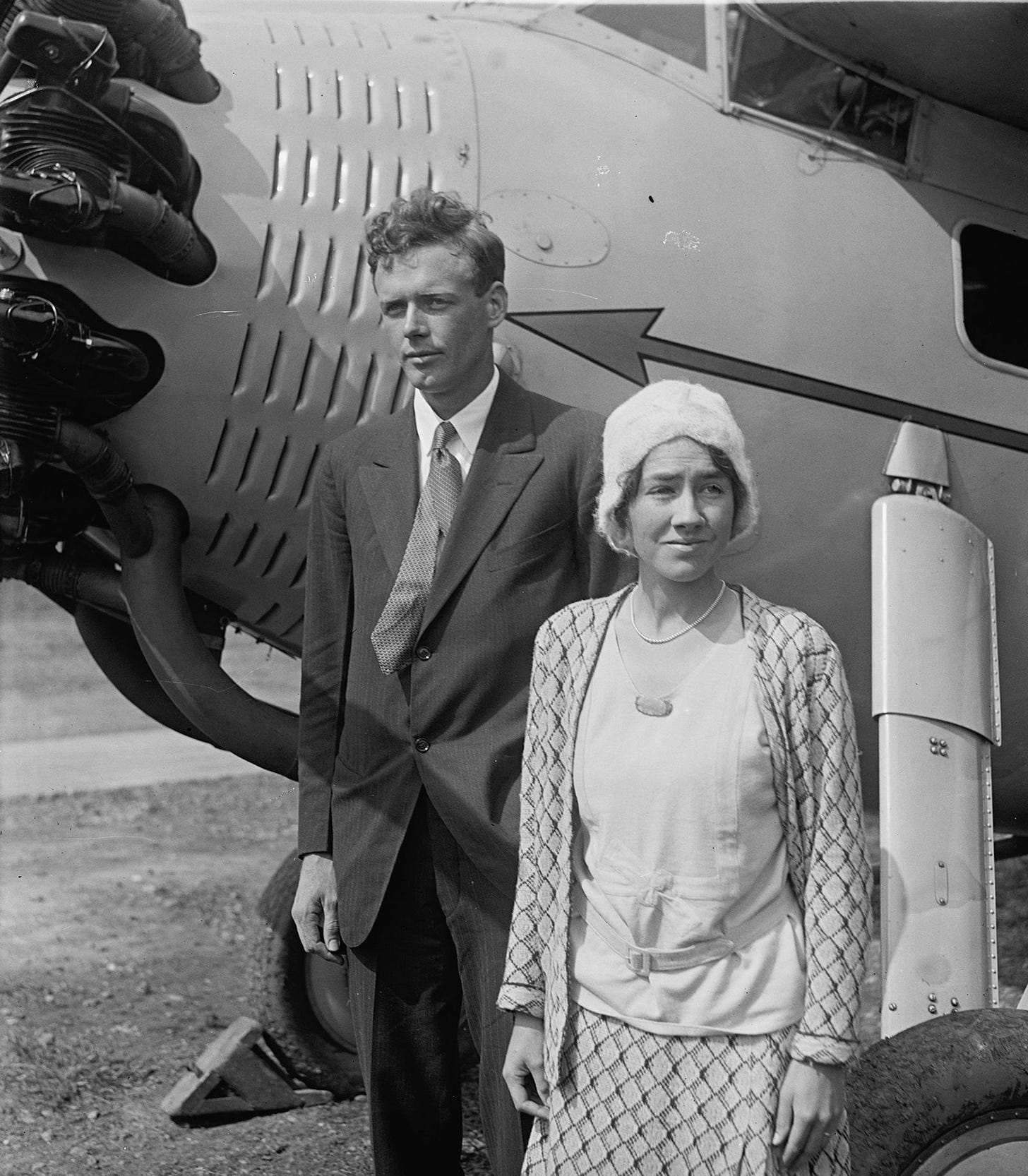
Welcome to A Narrative of their Own, an essay newsletter discussing the lives and literature of women.
If you enjoy reading essays on literature, as well as reviews of great books and recommended reading, please consider a free or paid subscription.
I had never heard of Anne Morrow Lindbergh or her book Gift from the Sea; neither did I know of her family history. This book was a recommendation from a reader (hello if that was you!) but I was instantly drawn to it when I read the blurb:
“In Gift from the Sea, Anne Morrow Lindbergh shares her meditations on youth and age; love and marriage; peace, solitude and contentment as she set them down during a brief vacation by the sea.”
Published in 1955, the book itself is set out in short essays during a vacation Lindbergh spent, alone, in a small cottage on Captiva Island, on Florida’s Gulf Coast. As she goes beach combing each day for shells, reads books beside the fire, and writes at the kitchen table, Lindbergh excavates the life of women and the need for solitude.
She expresses similar ideas to Virginia Woolf’s “room of one’s own”, though endearingly, she references her own as more of a “contemplative corner of their own”, which I loved. As a mother of five children, I expect Lindbergh knew the whole “Room” might be asking a little too much.
I recently posted on Notes, in fact, that I had acquired such a “corner”; somewhere in which to fold myself up and work on my writing.
Apart from the endearing connections to life stages and relationships Lindbergh finds between the names of the various shells- Oyster, Channelled Whelk, Moon Shell, and so on- what I found remarkable (and unexpected) was the relevance these small essays still have to our modern lives.

Of course, there are indications that she came from a wealthy background: the fact that she mentions having “help” in the home; the fact that she is able to indulge in a few days away on an island by herself. There are also indications, in parts, where she is obviously a woman of the nineteen fifties (although she subverted the expectations of this quite remarkably).
But what interested me most were the constant references to simplifying, slowing down, making room for solitude, and letting go of distractions.
In her world, “distractions” come as the newly installed televisions, magazines and advertising; the commercialisation of the US following WWII; and the constant requirements of being a wife and mother. She also speaks of cultural and societal pressures on women- something she would no doubt have been more aware of in the era after the war, when much emphasis was placed on women being the centre of the family home and contributing to the booming economy by purchasing new-fangled kitchen gadgets and procreating the future of the country.
“This is not the life of simplicity but the life of multiplicity that the wise men warn us of. It leads not to unification but to fragmentation. It does not bring grace; it destroys the soul.”
Goodness knows what she would have thought of our current digital diets! I found that her worries about the distracting and fragmentary nature of society could have been written in an essay last week, six months ago, next year…it was all so surprisingly relevant. Although she places much emphasis on this distraction being a large part of women’s lives, I believe that the sentiments within the book are now universal.
As has been well documented in some fine essays on this platform, distraction can be the enemy of our efforts to create, live full lives, and connect on a human level. When Lindbergh speaks of choking our spaces up with a continual stream of music and chatter, stating: “It is simply there to fill the vacuum”, I couldn’t help but think that she must have foreseen our current situation of social media and 24/7 entertainment.
“How difficult for us, then, to achieve a balance in the midst of these contradictory tensions, and yet how necessary for the proper functioning of our lives.”
Much of Lindbergh’s concerns revolve around carving out a creative life, something to which I know many readers can relate.
She also speaks about letting go of things- both physical and metaphorical- in a section which feels uncannily like an excerpt from a Marie Kondo decluttering manifesto. Her philosophy has much to connect it to the Minimalism space, a practice I have attempted to cultivate over the past decade, although she doesn’t refer to it using that word. She speaks of discarding physical clutter that is holding us back first, moving onto the internal clutter that we need to rid ourselves of if we are to create and live a simple and satisfactory life.
Later essays touch on love and marriage, describing the tenderness of a long marriage and the ways in which the initial attraction turns into something more akin to a “dance”, with both partners “perfectly in tune to the same rhythm,” and that they are “barely touching as they pass, but partners in the same pattern.” This struck me as a truthful description of a long relationship, whereby people change and grow together and apart, and ultimately move around one another without thinking, just being.
She also touches on middle age with hope and positivity:
“For is it not possible that middle age can be looked upon as a period of second flowering, second growth, even a kind of second adolescence?”
Ultimately, she comes to the conclusion that this time provides an opportunity to be free: for work to become about pleasure, not pressure; for space to open up and allow for beauty and significance, solitude and simplicity.
I was interested to find out more about the author of the book. In researching her biography and that of her family, I have to say that I was glad I read the book before researching this! I generally prefer to discover writing before finding out too much about the author, because I think it can often cloud the judgement of the writing, especially when considering writers of the past, who so often held views that would not be as palatable to our modern sensibilities.
It may be that many readers had already heard of this family (her husband was certainly more well-known), but what I found was surprising…
Anne Morrow Lindbergh was a writer and aviator, born in 1906 Englewood, New Jersey, into a fairly wealthy family. She was better known as the wife of aviation pioneer Charles Lindbergh, but she also worked as a copilot and radio operator on exploratory aeroplane missions over five continents, becoming the first woman to receive the Hubbard Medal of the National Geographic Society in 1934.
It was in Mexico, where her father was serving as US Ambassador, that she first met her future husband. Spending Christmas break there from Smith College, where she studied English, she met Charles and married him once she graduated. She became the first American woman to obtain a glider pilot’s license, and she and her husband chartered potential air routes for commercial airlines.
The shocking incident within the couple’s life, however, came in March 1932 when the Lindberghs’ first-born, 20-month-old son, Charles A. Lindbergh, Jr., was kidnapped from their home near Hopewell, New Jersey. His body was found shortly after, not far from the family home.
The kidnap and murder understandably received constant media coverage and in 1936, the convicted murderer was executed. The couple, fearing for their safety and finding the public intensity difficult, took refuge in Europe.
Unfortunately, whilst there, they developed isolationist views towards the possible involvement of the US in the war in Europe. This standpoint, as well as Charles’ acceptance of a medal from a Nazi official, brought public criticism to the couple on their return to the US in 1939.
To add to this, in 1940, Anne published a book, The Wave of the Future: A Confession of Faith, in which she discussed the fascist regimes of Germany and Italy, comparing them as similar to the French Revolution, stating her thoughts that if the US just stayed out of the war, they could perhaps nudge them in a more positive direction.
Following the bombing of Pearl Harbour, however, in 1941, the Lindbergh’s changed their stance somewhat, performing various wartime services for the US.
Between 1932 and 1947, the couple bore five more children, living first in Connecticut and later, Hawaii. Anne’s writing became more popular, publishing in the genres of fiction, nonfiction and poetry, and helping to revive public opinion of the couple. She also published several volumes of her diaries and letters, which touched on the kidnapping and murder of her son, although she did not write a formal autobiography.
A further shadow was to fall on the family history when, following Charles’ death in 1974, a secret love affair that lasted almost two decades was revealed.
In 1957, then aged 55, Charles had met a 31 year old hat maker living in Munich, Germany, named Brigitte Hesshaimer. Visiting two to three times a year up until his death, the couple had three children together. Even the children did not realise that Charles was their father.
Astonishingly, the intrigue didn’t stop there: it was later revealed that, at the same time, Charles was also involved in a secret long-term relationship with Hesshaimer’s sister, Marietta, and a third woman, Valeska, Lindbergh’s German translator and private secretary. Lindbergh reportedly also had two children with each of these women and again kept the identity of his fatherhood a secret.
Ten days before his death, Charles wrote to his three mistresses, asking them to continue to keep their relationships secret.
Astrid, daughter of Brigitte, subsequently discovered her father’s real identity, however honoured Charles’ wishes until her mother’s death in 2001. In the summer of 2003, the three Hesshaimer children broke their silence. They did not wish to claim against his estate, however did want to publish a book about their parents’ secret relationship. This they did in 2005, in Das Doppelleben des Charles A. Lindbergh (The Double Life of Charles A. Lindbergh).
Anne and Charles’ youngest child, their daughter Reeve, also wrote an essay about these revelations in her father’s past in her 2009 book Forward from Here: Leaving Middle Age and Other Unexpected Adventures, as well as about connecting with her German siblings.
Living until she was 94 years old, Anne Morrow Lindbergh received numerous honours later in life, including being inducted into the National Aviation Hall of Fame in 1979 and the National Women’s Hall of Fame in 1996.
I was left, after my research, a little confused.
On the one hand, the book is a lovely, meditative exploration of the need for solitude and simplicity, particularly around the creative lives of women. This remains, regardless of some of the dubious views the author held in the earlier part of the twentieth century.
However, what I found a little more difficult were the ideas around love and marriage Anne speaks so well of, which I had previously found touching. Knowing the almost fiction-like history of Charles and his mistresses’ painted a somewhat less truthful glimpse into the Lindbergh’s marriage, although when speaking of middle age, Anne does allude, at times, to “love affairs” in later life. Although biographer’s have suggested that Anne was not aware of Charles’ double life until after his death, some have also suggested that she may have held a secret affair of her own for several years.
As I previously stated, it can be problematic to investigate too closely the life and ideas of writers of the past, particularly when separating out their work from their history. During research for this newsletter, I often come across questionable ideologies and behaviour from some of the influential women writers I discuss. These can be difficult to reconcile within our modern and progressive understanding of the world, and I would highly recommend Claire Dederer’s discussions on this, which I wrote about here.
Ultimately, I would say that I recommend this book as a consideration of the need for humans to slow down and appreciate the simple things in life, as well as a contemplation on living creatively, particularly as a female creative.
I found it uplifting, marking paragraphs and quotations as I read. It is a slim book, which would make a perfect accompaniment on a trip this summer, particularly if you are taking in the sea…






Kate- I too just read this gem a few years ago and found it surprisingly relevant today, just as you described. Being from the US, I knew about her husband and the kidnapping but not his secret life! Thank you for sharing all this. I find your essays illuminating. Keep writing please!!
Great essay! I learned about the Lindbergh kidnapping in school, but I didn’t know about Anne’s writings. This is a fascinating look at separating a person’s work from their views. It can be a tricky issue!